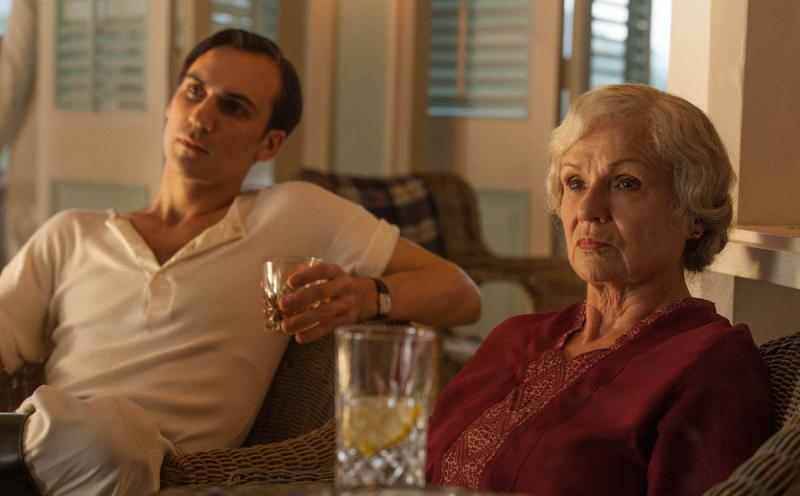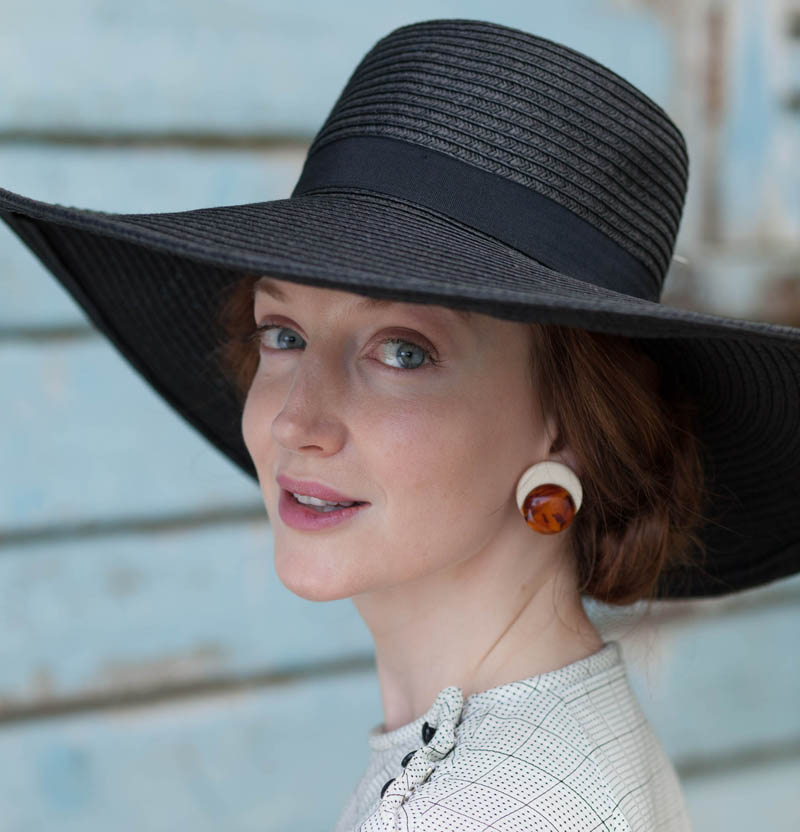Indian Summers, Channel 4 | reviews, news & interviews
Indian Summers, Channel 4
Indian Summers, Channel 4
The writing's on the wall for the Raj, but will we ever make sense of all these characters?

In the tradition of A Passage to India, The Jewel in the Crown and Staying On, Indian Summers is ambitious, a serious soap attempting to show the dying days of the Raj through a host of interwoven personal and political attachments. Passions run high in the foothills of the Himalayas, cool in the Indian summer, but X-rated for human relationships.
It opened in March 1932, when just a few thousand British civil servants ruled a subcontinent. A poor barefoot half-caste boy dressed in rags trudged along the road, then fled from a gang of young Indian boys throwing stones. Half-castes, we learned later, were accepted nowhere. We switched to the steam train carrying beautifully dressed young Englishwomen to their summer retreat in the hills, away from the suffocating weather of the Indian plains. The young memsahibs languidly wielded fans, watching from the window endless processions of Indian labourers carrying the luggage of the ruling classes uphill to Simla: among all the suitcases there was a rocking-horse.
 Julie Walters, as Cynthia Coffin, the cynical, all-seeing manager of the Royal Simla Club – with a sign outside forbidding the entrance of Indians and dogs – was readying the premises for the opening dinner of the season, the theatre for the adulterous passions and steamy liaisons that provided endless gossip for the British. The club was a mess, wrecked by the marauding monkeys of the winter, but lo and behold that huge staff got it all cleaned up in time. Meanwhile Cynthia wept in the tack room as she hung up the photograph of her beloved dead Reggie, once a captain with the 8th Gurhka Rifles.
Julie Walters, as Cynthia Coffin, the cynical, all-seeing manager of the Royal Simla Club – with a sign outside forbidding the entrance of Indians and dogs – was readying the premises for the opening dinner of the season, the theatre for the adulterous passions and steamy liaisons that provided endless gossip for the British. The club was a mess, wrecked by the marauding monkeys of the winter, but lo and behold that huge staff got it all cleaned up in time. Meanwhile Cynthia wept in the tack room as she hung up the photograph of her beloved dead Reggie, once a captain with the 8th Gurhka Rifles.
The train steamed on before halting at the body of the ragamuffin half-caste, who had evidently been poisoned, but was rescued by Leena, a beautiful young Indian woman (Amber Rose Revah), and the bearded Scots missionary Dougie (Craig Parkinson, pictured above) and taken to the Camarthen Missionary School. Emerging from his coma, he told the concerned adults he had no name. After toying with calling him Lazarus, they settled for Adam. It turns out Dougie is married to a horribly discontented and snobbish beauty, Sarah (Fiona Glascott), and has a sublimated passion for the gorgeous and good Leena.
 Back in Simla town, we learned that the Dalal family depended for its income entirely on the son of the family, Aafrin Dalal (Nikesh Patel, pictured left), a clerk in the British Civil Service. He, a Parsi (really?) is in an unsuitable romance with the Hindu Sita. And he is profoundly concerned with his revolutionary younger sister, who has painted her palms red as a sign of her political fervour. Meanwhile, the dastardly British invented the possibility of a cholera epidemic to give the militia and the police a fine excuse to investigate households suspected of insurrection.
Back in Simla town, we learned that the Dalal family depended for its income entirely on the son of the family, Aafrin Dalal (Nikesh Patel, pictured left), a clerk in the British Civil Service. He, a Parsi (really?) is in an unsuitable romance with the Hindu Sita. And he is profoundly concerned with his revolutionary younger sister, who has painted her palms red as a sign of her political fervour. Meanwhile, the dastardly British invented the possibility of a cholera epidemic to give the militia and the police a fine excuse to investigate households suspected of insurrection.
And dissatisfaction was in the air. Outside the Vice-regal Lodge a pavilion with a portrait of Queen Victoria was defaced with red paint, reading in Hindustani "Long Live Revolution". Our conflicted protagonist, Ralph Whelan (Henry Lloyd-Hughes), private secretary to the so far invisible Viceroy, is in charge. He comes from a centuries long family devoted to the Raj, and was preparing to welcome his sister Alice (Jemima West), fleeing from an unhappy marriage in England with her small son Percy, and returning to India after having been sent to boarding school in England at the age of 8. Do keep up!
 Cynthia opened the now immaculate Royal Simla Club with her version of song, dance and rousing speech; she also locked Ralph, the ambitious civil servant, in a clubroom with the American heiress Madeleine (Olivia Grant, pictured right) so that he could form a heterosexual attachment to show he is "steady" and ready for further promotion. In a climactic scene, the whole British contingent sat down at the vast club dinner-table, national anthem playing, and toasted the King Emperor. Ralph was called away to receive an urgent message, but instead became the subject of a murder attempt. The faithful Dalal was shot instead, and Cynthia sanctioned the use of the Viceroy’s Rolls-Royce to take Dalal to hospital.
Cynthia opened the now immaculate Royal Simla Club with her version of song, dance and rousing speech; she also locked Ralph, the ambitious civil servant, in a clubroom with the American heiress Madeleine (Olivia Grant, pictured right) so that he could form a heterosexual attachment to show he is "steady" and ready for further promotion. In a climactic scene, the whole British contingent sat down at the vast club dinner-table, national anthem playing, and toasted the King Emperor. Ralph was called away to receive an urgent message, but instead became the subject of a murder attempt. The faithful Dalal was shot instead, and Cynthia sanctioned the use of the Viceroy’s Rolls-Royce to take Dalal to hospital.
The whole is a curious mix. Many of the characters are empathetic, caught in a system they did not invent, but they are also drawn with far too broad a brush. The British are almost invariably caricatures, hardly noticing the Indians whose lives they rule. The Indians are beautiful and intelligent, but also caught in their own complex of prejudices. The high quality of most of the acting makes it almost but not quite believable. Time will tell.
Add comment
The future of Arts Journalism
You can stop theartsdesk.com closing!
We urgently need financing to survive. Our fundraising drive has thus far raised £49,000 but we need to reach £100,000 or we will be forced to close. Please contribute here: https://gofund.me/c3f6033d
And if you can forward this information to anyone who might assist, we’d be grateful.

Subscribe to theartsdesk.com
Thank you for continuing to read our work on theartsdesk.com. For unlimited access to every article in its entirety, including our archive of more than 15,000 pieces, we're asking for £5 per month or £40 per year. We feel it's a very good deal, and hope you do too.
To take a subscription now simply click here.
And if you're looking for that extra gift for a friend or family member, why not treat them to a theartsdesk.com gift subscription?
more TV
 theartsdesk Q&A: Suranne Jones on 'Hostage', power pants and politics
The star and producer talks about taking on the role of Prime Minister, wearing high heels and living in the public eye
theartsdesk Q&A: Suranne Jones on 'Hostage', power pants and politics
The star and producer talks about taking on the role of Prime Minister, wearing high heels and living in the public eye
 King & Conqueror, BBC One review - not many kicks in 1066
Turgid medieval drama leaves viewers in the dark
King & Conqueror, BBC One review - not many kicks in 1066
Turgid medieval drama leaves viewers in the dark
 Hostage, Netflix review - entente not-too-cordiale
Suranne Jones and Julie Delpy cross swords in confused political drama
Hostage, Netflix review - entente not-too-cordiale
Suranne Jones and Julie Delpy cross swords in confused political drama
 In Flight, Channel 4 review - drugs, thugs and Bulgarian gangsters
Katherine Kelly's flight attendant is battling a sea of troubles
In Flight, Channel 4 review - drugs, thugs and Bulgarian gangsters
Katherine Kelly's flight attendant is battling a sea of troubles
 Alien: Earth, Disney+ review - was this interstellar journey really necessary?
Noah Hawley's lavish sci-fi series brings Ridley Scott's monster back home
Alien: Earth, Disney+ review - was this interstellar journey really necessary?
Noah Hawley's lavish sci-fi series brings Ridley Scott's monster back home
 The Count of Monte Cristo, U&Drama review - silly telly for the silly season
Umpteenth incarnation of the Alexandre Dumas novel is no better than it should be
The Count of Monte Cristo, U&Drama review - silly telly for the silly season
Umpteenth incarnation of the Alexandre Dumas novel is no better than it should be
 The Narrow Road to the Deep North, BBC One review - love, death and hell on the Burma railway
Richard Flanagan's prize-winning novel becomes a gruelling TV series
The Narrow Road to the Deep North, BBC One review - love, death and hell on the Burma railway
Richard Flanagan's prize-winning novel becomes a gruelling TV series
 The Waterfront, Netflix review - fish, drugs and rock'n'roll
Kevin Williamson's Carolinas crime saga makes addictive viewing
The Waterfront, Netflix review - fish, drugs and rock'n'roll
Kevin Williamson's Carolinas crime saga makes addictive viewing
 theartsdesk Q&A: writer and actor Mark Gatiss on 'Bookish'
The multi-talented performer ponders storytelling, crime and retiring to run a bookshop
theartsdesk Q&A: writer and actor Mark Gatiss on 'Bookish'
The multi-talented performer ponders storytelling, crime and retiring to run a bookshop
 Ballard, Prime Video review - there's something rotten in the LAPD
Persuasive dramatisation of Michael Connelly's female detective
Ballard, Prime Video review - there's something rotten in the LAPD
Persuasive dramatisation of Michael Connelly's female detective
 Bookish, U&Alibi review - sleuthing and skulduggery in a bomb-battered London
Mark Gatiss's crime drama mixes period atmosphere with crafty clues
Bookish, U&Alibi review - sleuthing and skulduggery in a bomb-battered London
Mark Gatiss's crime drama mixes period atmosphere with crafty clues
 Too Much, Netflix - a romcom that's oversexed, and over here
Lena Dunham's new series presents an England it's often hard to recognise
Too Much, Netflix - a romcom that's oversexed, and over here
Lena Dunham's new series presents an England it's often hard to recognise

Comments
This isn't a review, Marina
They seem to have packed in
A very poor representation of